CEFALÙ, Italy – Winter has arrived in Detroit, and while it's been milder than usual, it's also been gray, wet and bleak. So of course the thought of a quick trip to southern Italy sounded like an ideal little getaway; a chance to check out silky, sinewy roads in the Sicilian sun. Not just any roads, either, as this trip would follow the path of the Targa Florio, an Italian road race held on the island of Sicily from 1906 to 1977, with the longest route involving multiple laps of a 91-mile course with about 2,000 corners. Things didn't go quite the way I expected, but it was still fun, and it turns out that a couple little cars from Japan are perfect for hustling around European mountain roads.
Yes, while Italy may conjure up images of Ferraris and Lamborghinis, I went all the way to Italy to drive Subarus; albeit the sportiest ones currently available, the BRZ tS and the WRX TR. That may seem less glamorous, but compared to most everything else on Sicily’s roads, they’re fairly ritzy rides. Small and affordable are the key themes among Sicilian machines, with the island mainly playing host to herds of Pandas (of the Fiat variety), all in varying states of condition. In the mix are agrarian diesel trucks and tractors (some of which actually are Lamborghinis) and small SUVs such as Suzuki Jimnys and Mitsubishi Pajeros.
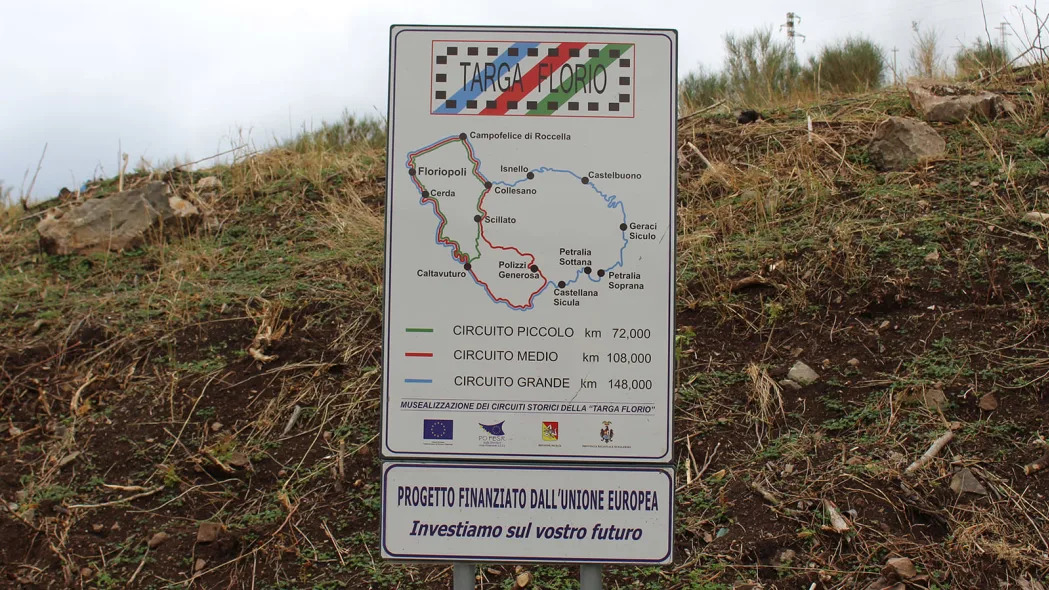
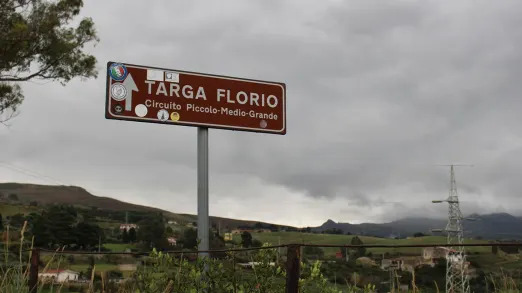
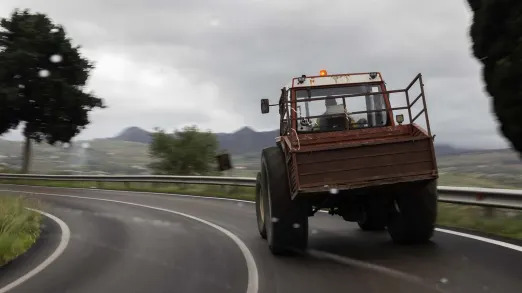
Italy, and particularly Sicily, are of course on the Mediterranean and are always portrayed as bright and sun-drenched, and fairly dry. The vegetation supports that with little outcroppings of cactus along the roads. But we managed to be greeted in mid-December with overcast skies followed by light rain and low cloud cover up in the mountains. It wasn't exactly the picturesque locale celebrated by Francis Ford Coppola, and it made for some less-than-ideal driving conditions.
It was as the rain and wind started coming in that we got our overview of each car, so let's get into that now. The basics of both the BRZ tS and WRX TR are quite similar, as they mainly boil down to brake and suspension upgrades. They differ in the details.
The Subaru BRZ tS stands out with its nifty shocks. They come from Hitachi, and the front units have two different valving systems. The idea is that with slower, more mild compression, it will use the stiffer valving, limiting body roll. But on more abrupt compression, it will use the softer valving, enabling a more compliant ride. This is all done mechanically rather than being controlled by computer or drive modes. Interestingly, the dual-mode shocks are only at the front, while the rear shocks have just a single mode. According to Subaru, the load demands of the rear suspension didn't necessitate the fancy shocks. Also interesting is the fact that the spring rates are the same between the tS and the regular BRZ.
The tS also gets larger, more powerful brakes. The front rotors grow by 1.2 inches, and the rears by 1 inch. They're clamped by Brembo calipers with four pistons up front and two in the rear. Surrounding them are 18-inch wheels with Michelin Pilot Sport 4 summer tires. Visually, there are tS badges outside and blue accents inside.
The WRX TR, which revives the name of a bare-bones "Tuner Ready" trim from more than a decade ago, follows a similar pattern as the BRZ, focusing mainly on the suspension and brakes. It has stiffer springs (by about 5%) along with retuned shocks to match. And the brakes are beefy. Brembo six-piston front calipers and two-piston rear calipers stop cross-drilled rotors that are 1-inch larger up front and 1.4-inches larger at the rear. They reside within unique 19-inch wheels wrapped in Bridgestone Potenza S007 tires. The equipment list is adjusted, too. It loses the sunroof to help offset weight gains elsewhere (such as those huge brakes). But keep in mind, the lightest WRX is still the base model at 3,329 pounds versus the 3,430 pounds of the TR. The TR also picks up the more heavily bolstered Recaro seats that were originally exclusive to the WRX GT. This means that the TR is the only way to get the WRX with those seats and a manual transmission.
We set off on our journey in the BRZ, and immediately, it started showing its inherent adeptness for the environment. The smallness was a huge boon for not only snaking through cramped village streets, but also for avoiding the harrowing Sicilian drivers. Forget turn signals, staying in lanes and following speed limits, the locals do whatever they want, so less vehicle is good. All those little Pandas start making a lot of sense. For similar reasons, the BRZ’s low sills and vast visibility were appreciated, too.

Getting up into the mountains, the small size and mass also made it confidence-inspiring. And the communication and response from the chassis and steering made it a joy. All of your finest and most minute inputs translate immediately through the weighty wheel, and it's all done smoothly. It's almost relaxed, despite connecting corner after corner after corner. Body roll was predictably limited, yet the ride quality proved to be quite compliant, as one of the trip’s other surprises was that the roads along the Targa Florio can be just as wavy and rough as those in southeast Michigan. Sometimes the pavement would disappear entirely for short patches. As for how those fancy shocks compared to the stock BRZ, well, they didn't seem radically different, which is perhaps to be expected when the springs are unchanged. The stock BRZ also has that sweet balance of low roll and decent ride.
Sadly, however, there was no serious pushing of either the BRZ or the WRX on this trip because of the aforementioned rain. There were stereotypical jokes at the start of the trip about avoiding a potential olive oil spill. That obviously didn't happen, but it sure felt like it. The mountain roads are tight, and even without taking speed limits into account, we were never going more than about 50 mph at the most, and often slower. The BRZ isn’t exactly powerful with only 228 horsepower, but even moderate throttle in some of those corners would break the rear end loose. As such, the excellent throttle response and smooth power delivery were very much appreciated, as was the superb pedal placement for managing everything.
The conditions and consequent speeds also made it tricky to really gauge the efficacy of the bigger binders. Certainly, the brakes felt plenty strong with good pedal feel, but we weren't coming anywhere close to really working them. Though admittedly, even in the dry, we might not have gotten close to their limits. Both on the BRZ and the WRX, the brake upgrades probably show the most benefit in track use when limiting fade and providing more at-the-limit stopping power is of greater consequence. On public backroads, the stock equipment is more than adequate.
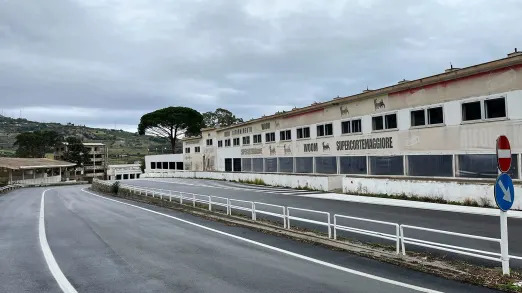
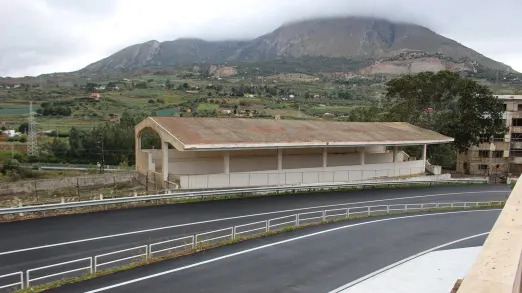
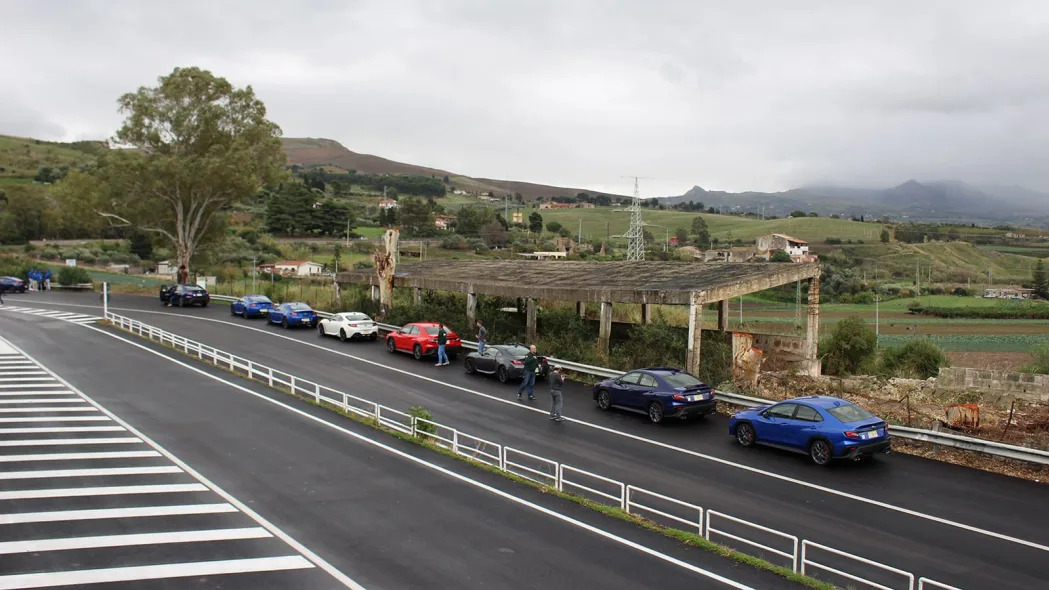
It was on this first stint of the drive that we also visited a couple of major historic sites of the race. The original pit garages and portions of the surrounding grand stands still line the road. The stucco-covered walls still have faded remnants of past sponsors, and in the misty morning light, they were eerie and invigorating. It obviously wasn't hard to imagine the howling of all kinds of European sports cars echoing between the buildings and into the cloud-covered mountains. Later, we stopped at a garage that once hosted Alfa Romeo's official team. It has since been turned into the Museo Vincenzo Florio by a man who watched the race from 1960 on and has accumulated all kinds of parts, trophies, racing suits and more from the races.
And in the midst of all this, the BRZ, whether a tS or not, felt incredibly appropriate. It might be a modern Japanese sports car of mixed pedigree, but with a high-revving, noisy, naturally aspirated four-cylinder; curvy two-door bodywork; lithe size and playful chassis, it seems like a true successor to the European sports cars that preceded our corporate convoy.
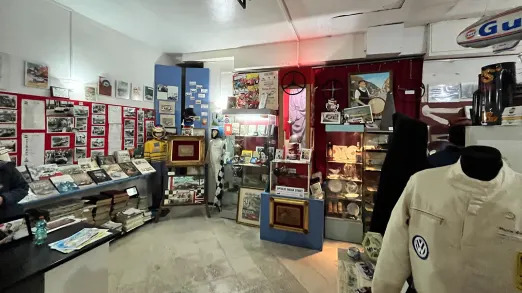

After lunch at Nicuzza, a cozy restaurant that felt more like a family dining room, it was time to hop into the WRX TR. While the BRZ may have a more European vibe, the WRX actually has history at the Targa. While the outrageous wheel-to-wheel race ended after 1977, the Targa Florio Rally followed it in a stage rally format. And in 1995 and 1999, privately campaigned Subaru Impreza WRX rally cars won the event.
While bigger, heavier, and much more refined than those '90s Subarus, the 2024 WRX TR still has the same basic layout of a turbocharged flat-four, a manual transmission and all-wheel drive. That added traction was definitely appreciated on the greasy roads, letting us pull away from corners with confidence. But whereas the BRZ liked to break the rear loose on exit, we had to be careful to avoid washing out the front tires on corner entry in the WRX. And once again, we couldn't really put those brakes to the test, but for what it’s worth, they did feel good. For 2024, all WRXs benefit from the bigger brake master cylinder fitted to this TR, too.
The 271 horsepower and 258 pound-feet of torque from the 2.4-liter turbo flat-four were welcome changes from the BRZ, too, letting the WRX rocket from corner to corner. And as in other WRXs, it's smoother and quicker to get into boost than any model prior. Engine noise is kept much lower than the BRZ, which makes it less taxing. The Recaro seats are superb, too, with enough bolstering to keep you in place, but enough room and support to be comfortable for all body types over all lengths of time. It's amazing that the Recaros are still restricted to two trims, but that's better than just the CVT-only GT.


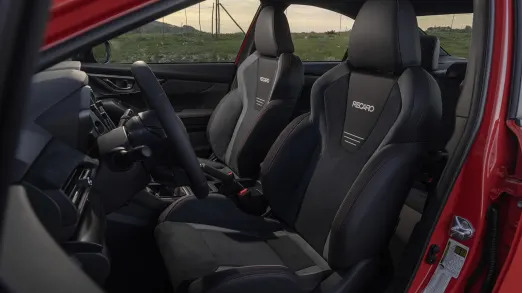
The stiff chassis and stiffened suspension kept the WRX flat in the tight corners, and highly responsive. Though with the rough pavement, which was worse on the second half of the drive, we actually might've preferred the softer stock suspension, as we were being bumped and banged around. The car never felt unsettled, but we sure did. And it's another sign beyond the brakes that the TR is probably better for the weekend track driver than a backroads bomber.
One additional note, the TR has retuned electric power steering assist, supposedly for better feedback. We couldn't really tell any major changes. Perhaps if we could drive a TR back-to-back with a regular WRX, it would be more apparent, but otherwise, it felt pretty similar. So, a very quick and nicely weighted steering rack, but feedback is lacking, as is on-center precision.
At the end of a long, memorable day, both of these cars proved to be spectacular driver's cars that are perfect for any kind of fun driving you could throw at them. The BRZ is ideal for the person who wants the most precise, unfiltered and technical experience possible, as well as the person who's willing to trade a bit of outright speed, refinement and practicality to do so. The WRX is a more flexible sportster, one that can be daily driven, but is still deeply engaging while providing a bit more power and grip to muscle around. It really comes down to your preference.
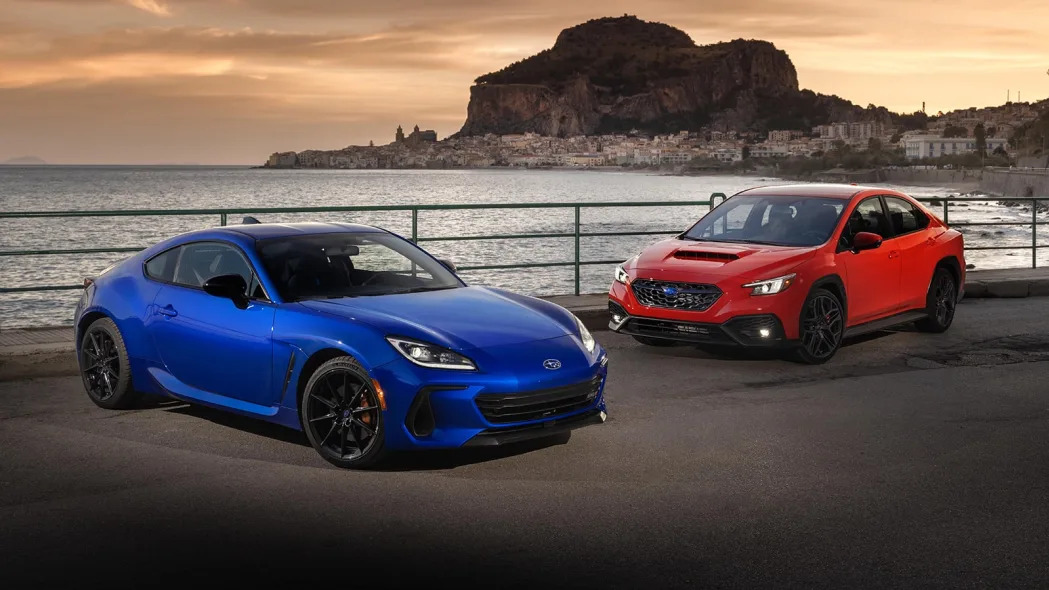
As for their respective sporty trims, recommending them comes with caveats. What stood out on this drive were each car's innate strengths, not so much the upgrades Subaru added. They may be more noticeable on a track, but that still means the value will depend on your use case. And then there’s the price. Each is an upgrade over the Limited trims, and for the brake and suspension upgrades, they’re relatively affordable. The BRZ tS, starting at $36,465, is $2,650 more than its Limited variant, and the WRX TR, costing $42,775, is $2,640 more than its Limited trim. And being based on the highest specification trim levels, they come with lots of additional features over the base trims such as upgraded sound systems, blind-spot monitoring, steering headlights and seat heaters. So if you’re already in the market for a high-level example, the tS and TR make a lot of sense to upgrade to. But if you’re looking for maximum performance for minimum cost, the BRZ tS is about $5,000 more than the base trim, and the WRX TR is nearly $9,000 pricier than the standard car. That’s a lot of money that could go to some impressive aftermarket parts or track time.
This Italian excursion didn’t quite go according to plan. The weather was moody, the roads were rough, and the cars couldn’t show off their full capabilities. Despite that, Sicily still shone, with beautiful sights, delicious food and warm people with the kind of love for what they do that any enthusiast can appreciate. And our oddball Japanese cars reflected that. The upgrades didn’t have a chance to prove their merit, but their core goodness still came through, and reminded us why they’re some of the best drivers’ cars for the money you can get.
Related video:
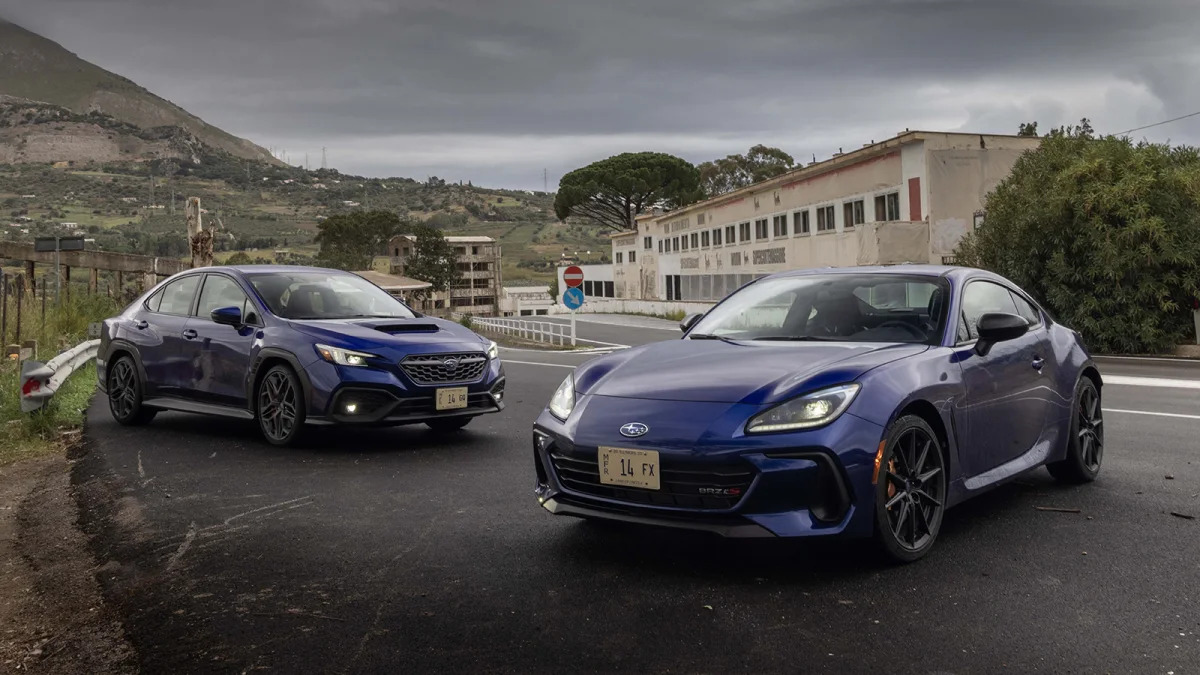
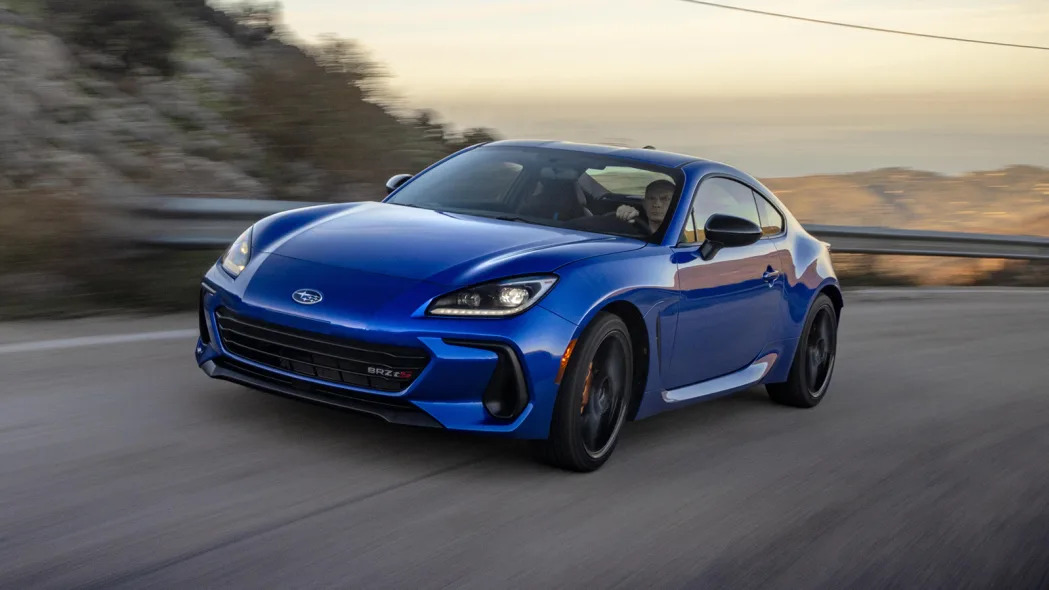
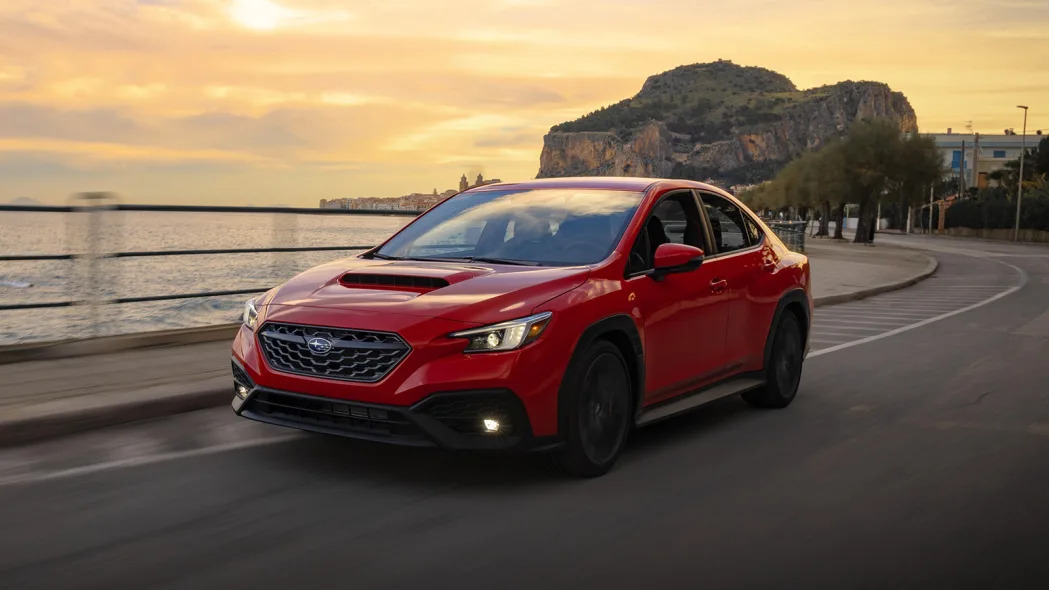








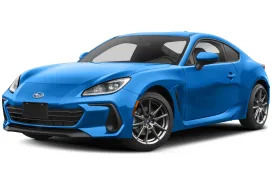

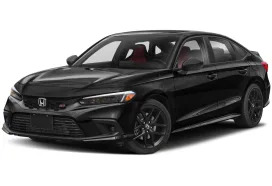

Sign in to post
Please sign in to leave a comment.
Continue